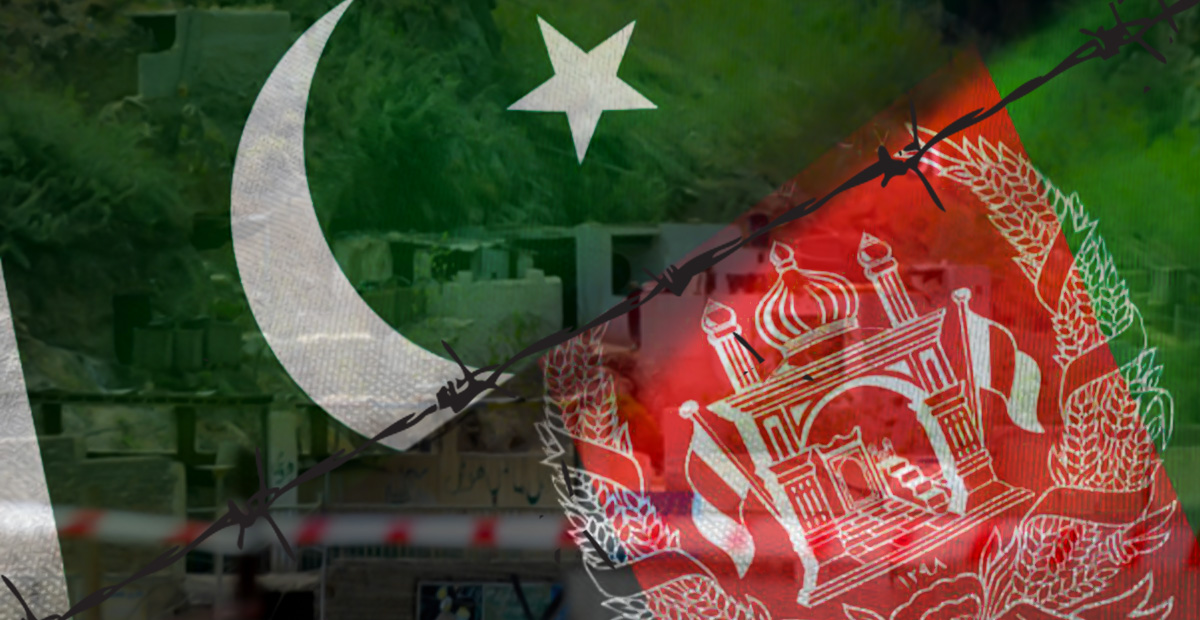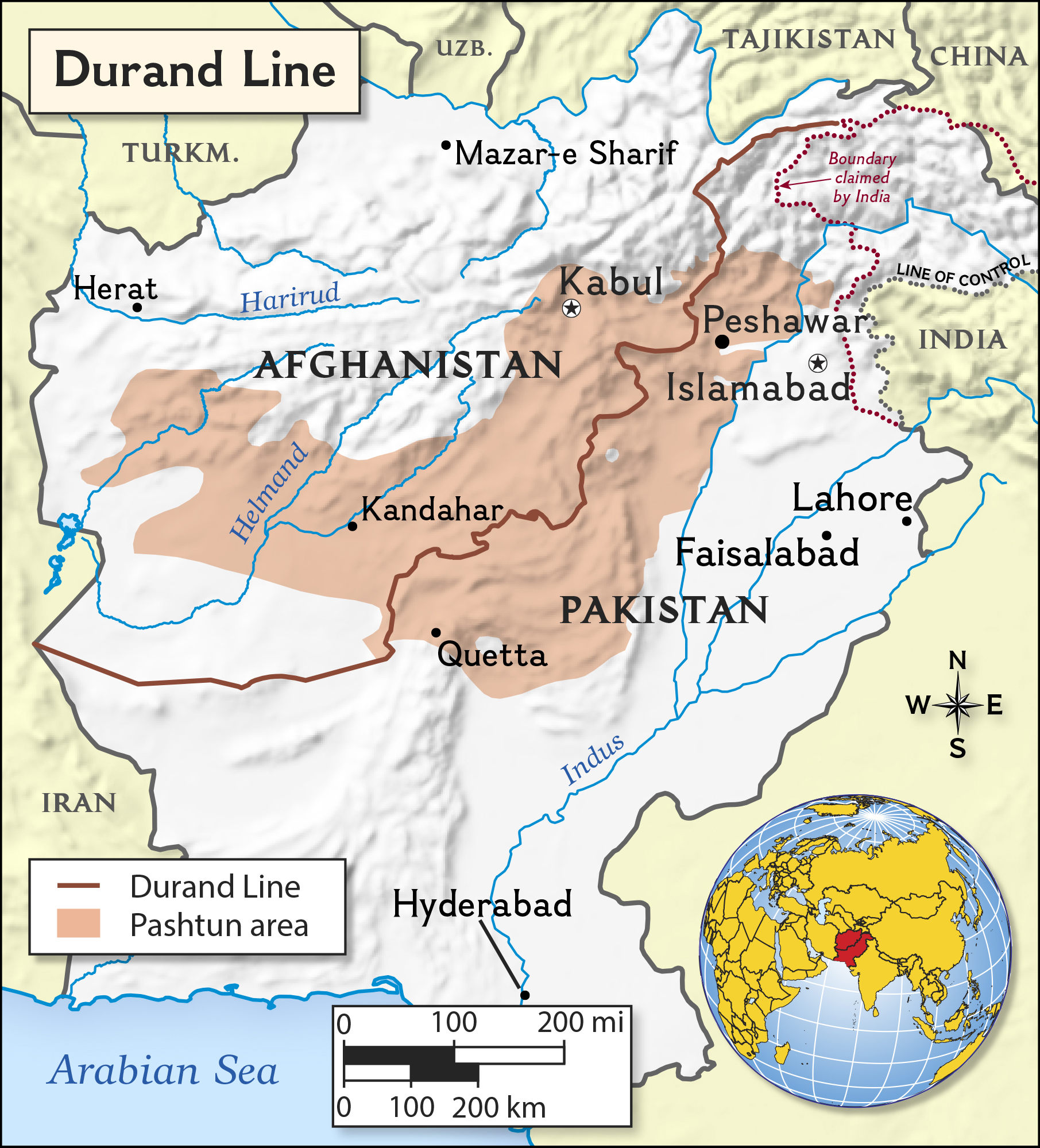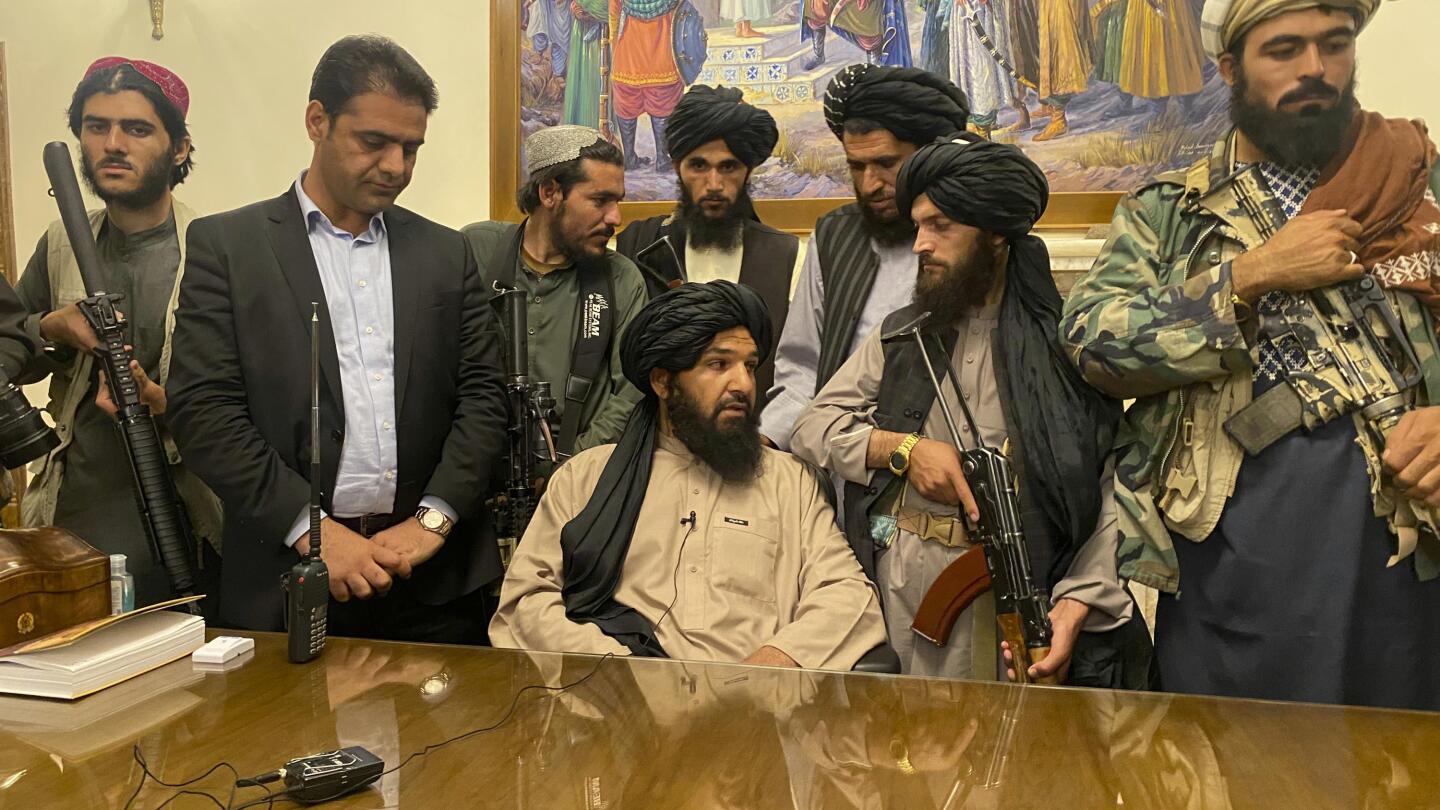In a shocking development that has sent ripples across South Asia and beyond, Afghanistan has entered Pakistani territory today, marking one of the most serious military confrontations between the two nations in decades. This sudden escalation has heightened tensions along the Durand Line, the historically disputed border separating the two countries, and raised concerns about a broader regional conflict involving neighboring powers and global stakeholders.
Background:
Decades of Tension Along the
Durand Line
The Durand Line, a 2,640-kilometer border established during the British colonial period in 1893, has been a constant source of tension between Afghanistan and Pakistan. Successive Afghan governments, including the Taliban regime, have refused to formally recognize it as the international boundary, claiming that it unfairly divided ethnic Pashtun tribes across both nations.
Since the Taliban took over Afghanistan in August 2021, following the withdrawal of U.S. and NATO forces, relations between Kabul and Islamabad have grown increasingly strained. Pakistan, once a key supporter of the Taliban, has accused the group of harboring militants from the Tehrik-i-Taliban Pakistan (TTP) — a terrorist organization responsible for deadly attacks inside Pakistan. In return, the Taliban government has accused Pakistan of conducting airstrikes on Afghan soil and supporting anti-Taliban factions.

The Events of Today: Afghanistan’s Entry into Pakistan
According to initial reports from regional security sources, Afghan border forces and Taliban fighters launched a coordinated offensive early this morning across several checkpoints along the Khyber Pakhtunkhwa and Balochistan borders. Heavy gunfire and artillery exchanges were reported in key flashpoints such as Chaman, Spin Boldak, and Torkham.
Eyewitnesses in Chaman described the situation as “war-like,” with explosions and gunfire echoing through the city. Pakistani authorities swiftly sealed all major crossings, halting trade and civilian movement between the two countries.
Afghanistan’s Defense Ministry released a brief statement claiming that its actions were in retaliation for Pakistani airstrikes carried out two days earlier in Khost and Paktika provinces, which allegedly killed several Afghan civilians. “Afghanistan will defend its sovereignty and respond decisively to aggression,” the statement read.
Pakistan’s military, however, denied launching airstrikes in Afghanistan and accused the Taliban government of provoking conflict to divert attention from its internal struggles. The Inter-Services Public Relations (ISPR), Pakistan’s military media wing, stated: “Afghan forces launched an unprovoked attack on Pakistani border posts. Our troops have responded effectively and inflicted heavy losses on the aggressor.”
Casualties and Military Engagements
While exact figures remain uncertain, both sides have reported heavy casualties. Afghan sources claim to have captured several Pakistani military outposts, while Pakistan insists it has repelled most of the incursions and regained control of the contested zones.
According to local reports:
- Over 150 fighters from both sides are feared dead or injured.
- Civilians in border villages have begun fleeing their homes, seeking safety further inland.
- The Chaman border crossing, a key trade route, has been shut down indefinitely.
Video footage circulated on social media appears to show Taliban convoys entering Pakistani villages, though these claims remain unverified. Witnesses in Quetta and Spin Boldak have reported hearing heavy artillery fire and the movement of armored vehicles.
Political and Diplomatic Reactions
The incursion has prompted immediate diplomatic backlash. Pakistan’s caretaker Prime Minister called an emergency security meeting in Islamabad to assess the situation and vowed to “defend every inch of Pakistani soil.” The Pakistani Foreign Ministry has summoned the Afghan Ambassador to lodge a strong protest.

Meanwhile, Afghanistan’s Foreign Ministry released a statement accusing Pakistan of “violating Afghan sovereignty for months” and said that today’s action was a defensive response. It also called on the international community to “recognize Pakistan’s repeated violations of Afghan airspace and borders.”
The United Nations has urged both sides to exercise restraint and avoid further escalation. A spokesperson for the UN Secretary-General stated: “We are deeply concerned about reports of cross-border military operations. All parties must prioritize civilian safety and resume dialogue immediately.”
Global and Regional Reactions
The crisis has drawn international attention. The United States, which withdrew from Afghanistan in 2021 after two decades of war, expressed concern that the fighting could destabilize the entire region. A U.S. State Department spokesperson said: “We urge both Afghanistan and Pakistan to resolve their disputes peacefully and avoid actions that could lead to a broader conflict.”
Neighboring countries such as Iran, China, and India have also expressed alarm. Tehran has called for “mutual respect for sovereignty”, while Beijing, which has deep economic ties with both nations through the Belt and Road Initiative, has offered to mediate between Kabul and Islamabad.
India, on the other hand, has viewed the development through a security lens, given its longstanding tensions with Pakistan. Indian analysts have suggested that a prolonged border conflict could strain Pakistan’s military resources, potentially impacting its focus on its eastern border with India.
The Humanitarian Impact
The sudden fighting has left thousands of civilians caught in the crossfire. Reports from humanitarian agencies suggest that hundreds of families living near the border have fled to makeshift camps. The UN Refugee Agency (UNHCR) and the International Committee of the Red Cross (ICRC) are closely monitoring the situation and preparing emergency aid.

Local hospitals in Chaman and Spin Boldak are overwhelmed with casualties. Power outages and communication breakdowns have made it difficult for rescue workers to reach affected areas. Aid workers have called for “immediate humanitarian corridors” to allow the safe passage of civilians trapped near the border.
Trade between the two countries — already strained by political tensions — has ground to a halt. The closure of major border crossings could cost millions in lost revenue and further worsen Afghanistan’s struggling economy, which is already suffering from international sanctions and severe food shortages.
Historical Context:
A Long-Standing Rivalry
The current conflict cannot be viewed in isolation. It is the product of decades of mistrust, territorial disputes, and proxy conflicts.
Since the 1970s, Pakistan has played a major role in Afghan politics — first by supporting anti-Soviet Mujahideen fighters during the Cold War, and later by backing the Taliban’s rise to power in the 1990s. However, after 2021, relations began to deteriorate as the Taliban refused to curb the TTP, whose attacks have surged within Pakistan.
The Durand Line has always remained a flashpoint. Pakistan has tried to fortify it with fencing and border posts, but Afghanistan continues to reject it as a colonial-era imposition. The presence of ethnic Pashtuns on both sides of the border adds to the complexity, as local loyalties often transcend national boundaries.
Military Strategy and Analysis
Defense analysts believe today’s incursion marks a major shift in Afghanistan’s border policy. Rather than limiting itself to defensive skirmishes, the Taliban government appears to be testing Pakistan’s military resolve. Experts warn that the Taliban, emboldened by their control of Afghanistan, may be seeking to assert regional dominance or rally nationalist sentiment at home amid economic turmoil.
On the other hand, Pakistan faces its own internal challenges — from political instability and inflation to growing militancy in its northwestern regions. Analysts caution that Islamabad may respond with stronger air and ground operations, potentially widening the conflict.
The Pakistani Air Force has reportedly placed its western bases on high alert, and additional troops have been deployed to Balochistan and Khyber Pakhtunkhwa. Sources suggest that the government may soon convene parliamentary consultations to discuss possible countermeasures, including the use of drones and precision strikes.
International Implications
If this conflict continues, it could have global security ramifications. Afghanistan remains a hub for multiple extremist groups, and instability could allow these organizations to expand operations across borders. A prolonged conflict might also disrupt China’s Belt and Road investments, impact Iran’s border trade, and complicate U.S. counterterrorism strategies in the region.
Experts fear that if unchecked, the situation could escalate into a wider regional war, drawing in other countries and non-state actors. Given the fragility of both governments, the potential for miscalculation remains dangerously high.
Calls for Peace and Negotiation
Despite the escalating violence, there are growing calls for dialogue. Pakistan’s foreign minister has hinted at the possibility of involving Qatar or China as mediators. Afghanistan’s leadership, while publicly defiant, has also indicated willingness to hold talks “if Pakistan halts its aggression.”
International organizations, including the Organization of Islamic Cooperation (OIC) and the Shanghai Cooperation Organization (SCO), are expected to hold emergency meetings in the coming days to address the crisis.
What Happens Next
As of now, the situation remains highly volatile. The Pakistan-Afghanistan border is effectively closed, and both nations have put their militaries on full alert. Analysts predict that the coming 48 hours will be crucial in determining whether this incident spirals into a full-scale war or can be contained through diplomacy.
The world is watching closely, as two nuclear-armed neighbors stand on the brink of yet another chapter of conflict. The hope among global leaders is that both sides will recognize the devastating cost of war and return to dialogue and diplomacy before it’s too late.
The Aftermath:
Shifting Dynamics and Emerging Realities
As the immediate violence begins to subside, both Afghanistan and Pakistan face an uncertain path forward. The border towns that bore the brunt of the conflict are now scenes of destruction, with homes reduced to rubble, roads torn apart by shellfire, and markets eerily silent. The human toll continues to rise as more casualties are uncovered from the debris.
In Spin Boldak, hundreds of displaced families are gathered near temporary relief camps, hoping for food and shelter. Local residents describe the nightmarish hours when artillery shells rained down on their neighborhoods. “We could hear nothing but explosions,” said one survivor. “There was nowhere to run.”
Pakistan’s National Disaster Management Authority (NDMA) has launched emergency operations, sending medical teams and supplies to Chaman and Quetta. Meanwhile, Afghanistan’s Red Crescent Society is attempting to reach affected villages across the border. However, relief work remains extremely dangerous due to continued sporadic clashes and landmines left behind.
Political Fallout in Both Capitals
In Islamabad, the crisis has intensified political divisions. Opposition leaders are criticizing the government for its failure to anticipate the attack, accusing it of mishandling relations with the Taliban regime. The caretaker Prime Minister, however, defended the military’s response, asserting that “Pakistan has sent a clear message that aggression will not be tolerated.”
In Kabul, Taliban leaders are presenting the operation as a victory for Afghan sovereignty, using state media to rally public support. Crowds in the capital reportedly celebrated what they see as a “defense of the homeland.” Analysts suggest that the Taliban may be using this conflict to divert public anger away from Afghanistan’s collapsing economy, worsening hunger crisis, and rising unemployment.
Regional observers fear that this surge of nationalism could harden positions on both sides, making diplomatic resolution more difficult in the short term.
The Role of External Powers
International players are now weighing their next moves. China, which shares a short border with Afghanistan and maintains close ties with Pakistan, has quietly urged both governments to avoid escalation. Beijing’s main concern is the potential impact on the China-Pakistan Economic Corridor (CPEC), a multi-billion-dollar infrastructure initiative crucial to China’s Belt and Road strategy.
Russia has also entered the conversation, calling for “strategic restraint” and offering to mediate. Moscow’s influence in Central Asia and its cautious engagement with the Taliban make it a potential broker in the ongoing crisis.
The United States, while distancing itself from direct involvement, has expressed alarm over the possibility of Afghanistan once again becoming a terrorist safe haven. American defense officials are reportedly monitoring the situation closely, worried that chaos could empower ISIS-K and other extremist groups in the region.
India, long wary of Pakistan’s military activities, is closely following developments. Indian analysts have suggested that Islamabad’s preoccupation with the western front could temporarily ease tensions along the India-Pakistan Line of Control (LoC), though they caution that instability in Afghanistan could also spill over into Kashmir.
Information Warfare and Propaganda
Both Kabul and Islamabad are now engaged in an intense information war. Afghan state media channels are airing footage of captured Pakistani posts, showing Taliban fighters raising their flag. Meanwhile, Pakistani news outlets counter these claims with images of Taliban casualties and reclaimed border territories.
Social media platforms like X (formerly Twitter) and TikTok have become virtual battlegrounds for propaganda, with hashtags like #AfghanVictory and #DefendPakistan trending across South Asia. Experts warn that misinformation is spreading rapidly, fueling nationalistic anger and anti-refugee sentiment on both sides of the border.
Governments in both countries have reportedly restricted internet access near conflict zones to limit the spread of sensitive footage and prevent panic.
Economic Ramifications
The impact on the economy is already being felt. The closure of the Chaman-Spin Boldak and Torkham crossings — vital arteries for trade — has led to shortages of fuel, food, and other essentials in Afghanistan. Prices of wheat and cooking oil have skyrocketed overnight.
Pakistan, too, is facing a blow. Border trade accounts for millions in revenue, and thousands of truck drivers and laborers are now stranded. The ongoing crisis could further strain Pakistan’s fragile economy, already suffering from inflation and currency devaluation.
Economists warn that the breakdown of trade between the two countries could have long-term consequences, deepening poverty and unemployment, particularly in border provinces that depend on cross-border commerce.
Rising Regional Instability
The renewed hostility between Afghanistan and Pakistan comes at a time when South Asia is already grappling with multiple crises — from political unrest in Iran to the economic meltdown in Sri Lanka. Analysts warn that another prolonged conflict could destabilize the entire region.
Security experts have raised the alarm over the potential infiltration of militant groups who might exploit the chaos. Both nations have a history of harboring extremist factions, and an open conflict could provide fertile ground for them to regroup and expand.
There is also growing concern about refugee movements. Pakistan already hosts more than 1.7 million Afghan refugees, and any new wave of displacement could trigger a humanitarian emergency stretching beyond its borders.
Voices from the Ground
In the border towns, ordinary people are paying the highest price. Traders, farmers, and herders who once crossed the border daily for work now find themselves trapped in a war zone.
“I lost my shop and everything I had,” said Gul Rahman, a merchant from Chaman. “We don’t care about politics; we just want peace so we can live and feed our families.”
Across the border, in Spin Boldak, residents echo the same plea. “This war helps no one,” said Mariam, a mother of four. “Every time two governments fight, it’s the people who suffer.”
Human rights groups are calling for immediate ceasefires to allow humanitarian access and protect civilians. They warn that without urgent intervention, the situation could spiral into a full-blown humanitarian catastrophe.
Diplomatic Efforts Underway
Behind closed doors, diplomatic efforts are gaining momentum. Officials from Qatar, China, and Turkey have reportedly initiated backchannel talks between Islamabad and Kabul. While neither side has confirmed these discussions publicly, leaks from diplomatic sources suggest that ceasefire proposals are on the table.
The United Nations Security Council is expected to convene an emergency session to address the crisis. Several member states, including the U.S., Russia, and China, have expressed support for a negotiated settlement.
However, the success of any peace initiative will depend on whether both countries can set aside deep-rooted mistrust and commit to sustained dialogue. Given the long history of proxy warfare and border disputes, achieving lasting peace remains a formidable challenge.
The Road Ahead:
Peace or Prolonged Conflict?
As the world watches anxiously, experts are divided on what comes next. Some believe that both sides will eventually step back under international pressure, wary of the economic and political fallout of prolonged conflict. Others fear that hardliners in both governments could push for escalation to consolidate domestic power.
There are growing calls from civil society on both sides for a new border framework, one that respects sovereignty while ensuring the safety and livelihoods of people living along the Durand Line.
For now, the guns have not fallen silent. The smoke over the mountains of Balochistan and Nangarhar is a grim reminder of the fragile peace that binds the region together. As night falls once again over the frontier, one truth becomes increasingly clear: the path to lasting peace between Afghanistan and Pakistan will be long, painful, and uncertain.
Final Thoughts
The crisis unfolding today between Afghanistan and Pakistan is not just a border dispute — it is a reckoning of history, identity, and power. Both nations, bound by geography and divided by politics, face a critical choice: continue down the path of conflict and destruction, or embrace the difficult journey toward dialogue and reconciliation.
The coming days will reveal whether the two neighbors can overcome decades of enmity and work toward a shared future. Until then, the world can only hope that reason prevails over rage, and that peace once again finds a place in the rugged valleys that separate — and connect — these two nations.
Conclusion
Today’s events mark a turning point in South Asian geopolitics. The Afghan entry into Pakistani territory signals not only the collapse of fragile trust between Kabul and Islamabad but also a potential shift in the balance of power in the region.
As the smoke rises over the borderlands and civilians brace for the worst, one thing is clear: peace in South Asia hangs by a thread.
(Click notification ![]() for more updates)
for more updates)
By: V.Harishram
”Stay true, bring facts to you”

